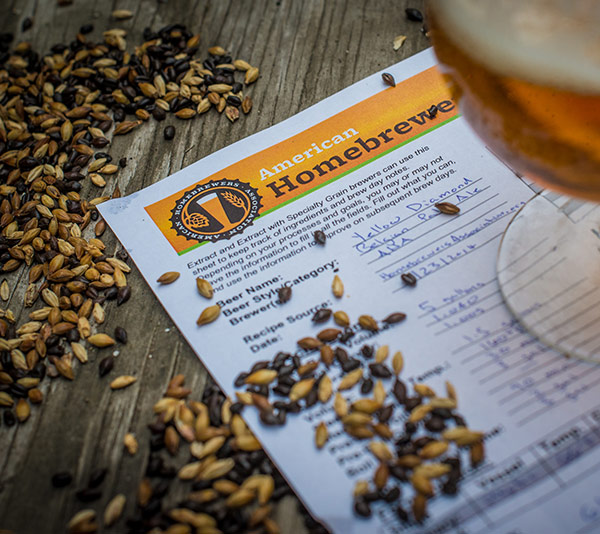
The art and science of formulating a beer recipe from scratch is an involved process. While we aren’t going to walk through all the steps since they could fill a book (in fact they do: Designing Great Beers), here are five tips to consider for those testing the waters of custom recipe formulation.
1. Find Inspiration
Without an end goal in mind, there is the risk of creating a kitchen-sink beer—and not one of those tasty ones, but the kind that is muddled and unfocused. Determine the inspiration behind your recipe and form a goal and stick with it.
Inspiration could come in the form of a classic style, interesting ingredient or your favorite commercial brew. Whatever it is, try to keep the goal at the front of your mind as you formulate the recipe. Your inspiration will factor greatly in decision making, especially if you establish targets for specifications like the original gravity, color, bitterness, etc.
2. Limit Ingredients
With a goal in mind, make a list of all the possible ingredients that could be used in your beer. This includes grains, hops, yeast, adjuncts and even different water types. You can use other recipes, BJCP style guidelines or brewing books to learn about typical ingredients for specific styles.
Take the time to dig into each ingredient a bit to know what it will contribute to the profile of the beer. If it sounds like something you’d want, write it down. Last, slim down your ingredient list to the bare essentials—the least amount of ingredients needed to achieve your goal. The old saying “less is more” can go a long way in making a great recipe. Look into SMaSH and “brewing on the ones” techniques for more on the benefits of limiting ingredients.

3. Tailor Recipe to Your System
Knowing your system and being able to anticipate its variables is invaluable when planning a beer recipe. Establish your limitations based on your equipment and process. Are you able to do full boils? If not, this will effect the quantity of your hop additions. Can you hold fermentation temperatures near freezing? If so, you can have a go at a lager recipe.
Homebrewers should also take detailed notes of their brew days, which can be referenced in the future in order to better predict the outcome of a beer. Use our homebrewing notes sheets to keep track of all your brew day specs on one convenient page. It’s much easier than trying to remember the finer details a few months down the line.
4. Consider Various Techniques
The beauty of homebrewing is the various techniques that can be adopted to fit your process and goals. If you are looking for a dry finish, you could try a highly attenuative yeast, adding simple sugars to the boil or mashing at lower temperatures. All of these will result in a similar effect, but through different means and typically under different circumstances. Consider things like pitching rates, mash steps and fermentation schedules, which can vary widely depending on your end goal.
5. Repeat
It’s understandable to want to try a new recipe every time you brew, but one of the best ways to hone in a recipe is to brew it over and over again, making minor tweaks in hopes of improvement. Bring your brew to homebrew club meetings or submit it into competitions to see how it is received. Take into consideration all feedback, and see how it may influence changes to the recipe. You can’t improve a recipe if you never try to make it again…rarely does it come out as perfect as you imagined the first time around!
Sources: Designing Great Beers by Ray Daniels; Brad Smith’s “Beer Recipe Design” seminar at the 2013 National Homebrewers Conference (conference seminars available to members)



Share Post